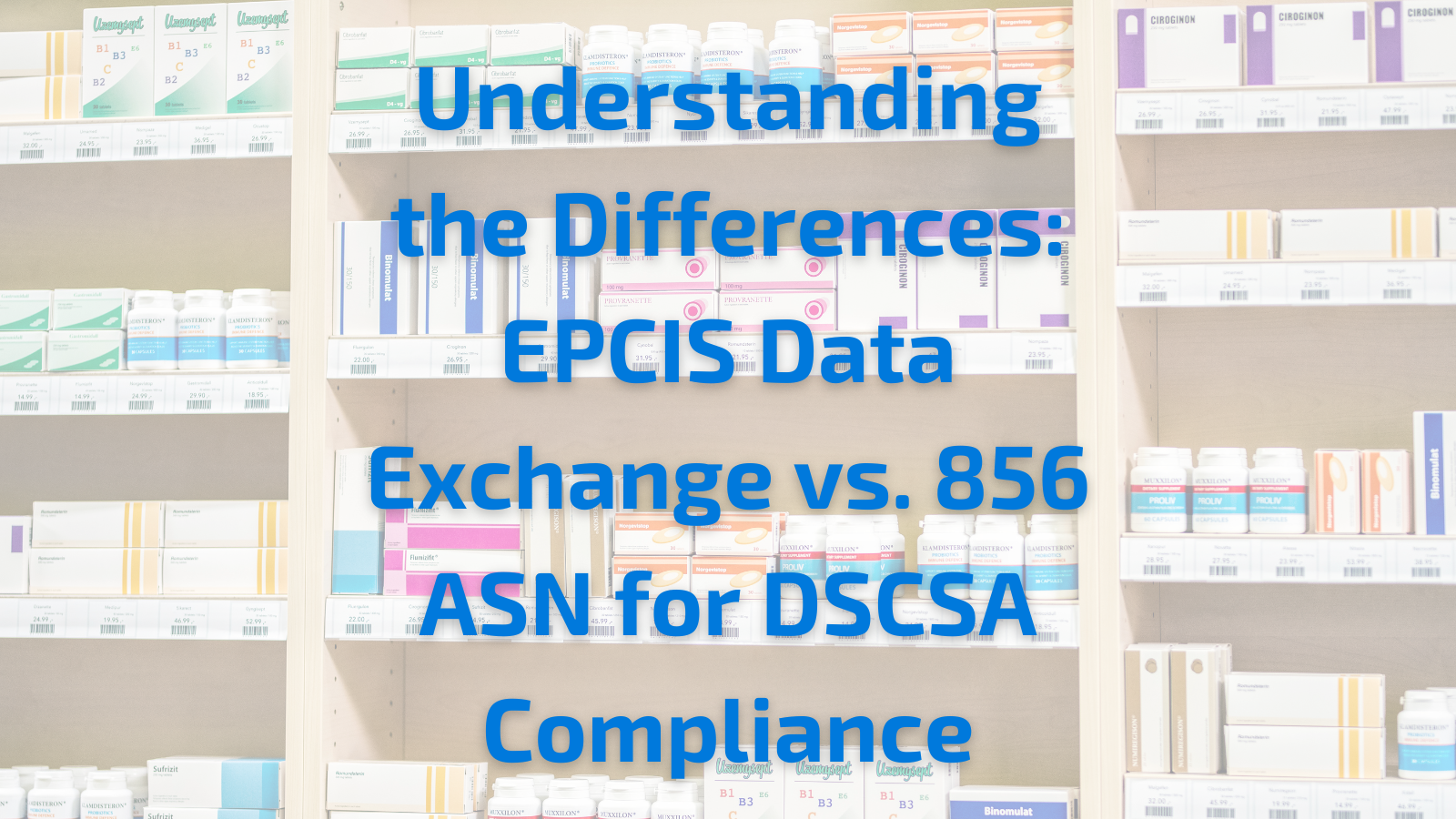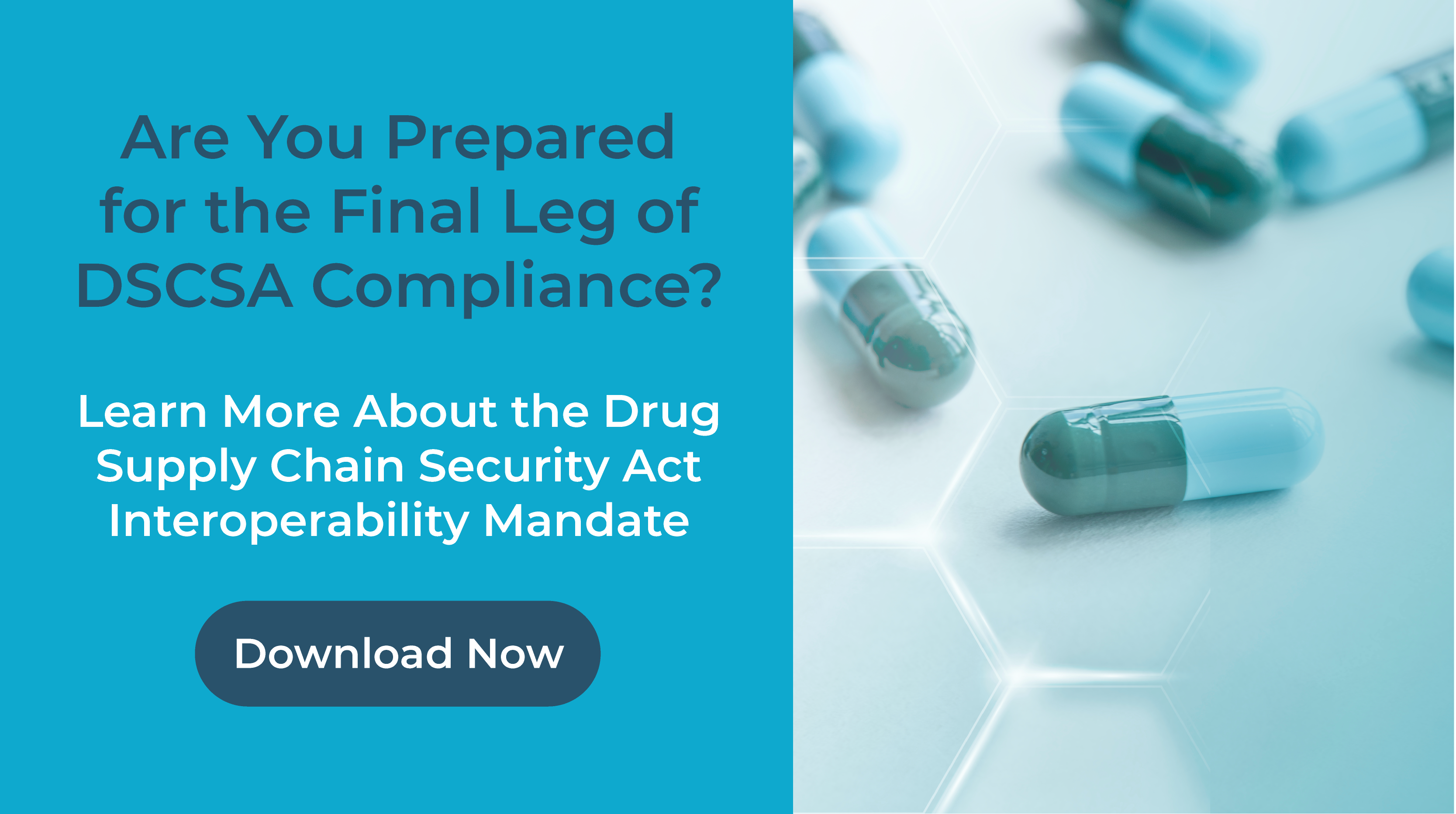Understanding the Differences: EPCIS Data Exchange vs. 856 ASN for DSCSA Compliance
By Andre Caprio | Posted on August 8, 2023

As the November 27th, 2023, deadline for the Drug Supply Chain Security Act (DSCSA) approaches, the pharmaceutical industry is abuzz with discussions about compliance requirements. One area that seems to be causing confusion is the choice between EPCIS data exchange and 856 ASN (Advance Shipping Notice) services. It is essential to clarify the differences between these two approaches and understand which is the true requirement for November.
Firstly, let's start with the basics. The DSCSA, enacted in 2013, aims to enhance the security of the pharmaceutical supply chain by establishing a framework for tracing prescription drugs throughout their journey from manufacturers to patients. By implementing serialization requirements, the DSCSA mandates using unique identifiers for individual drug packages to track their movement through the supply chain to improve patient safety.
Two Methods for Tracking Pharmaceutical Products
When it comes to meeting these serialization requirements, two primary methods have emerged: EPCIS data exchange and 856 ASN. While both approaches serve the purpose of tracking pharmaceutical products, they differ significantly in terms of functionality and compliance with the upcoming DSCSA deadline.
DSCSA Mandates EPCIS Serialization
EPCIS (Electronic Product Code Information Services) is a global data standard developed by GS1, the global standards organization. EPCIS allows for real-time, event-based information exchange, enabling stakeholders to capture and share crucial supply chain data. It provides detailed visibility into product movements, allowing for seamless traceability and accountability.
In the context of DSCSA compliance, EPCIS serialization requires pharmaceutical manufacturers and stakeholders to generate and share comprehensive data at every stage of the supply chain. This includes information such as unique product identifiers, lot numbers, expiration dates, and transaction histories. EPCIS offers granular visibility into product movements and enables stakeholders to respond quickly to potential supply chain disruptions, including the identification and recall of counterfeit or compromised drugs.
856 ASN Falls Short in Meeting Requirements of DSCSA Serialization
On the other hand, the 856 ASN, or Advance Shipping Notice, is a document that provides information about the contents of a shipment. It typically includes details such as purchase order numbers, quantities, item descriptions, and tracking numbers. While the 856 ASN is valuable for logistics and inventory management purposes, it falls short when it comes to meeting the specific requirements of DSCSA serialization.
Unfortunately, misconceptions exist regarding the November 27th DSCSA deadline. Some pharma serialization providers are wrongfully offering 856 ASN services as a means of compliance. It is crucial to understand that the DSCSA mandates EPCIS serialization as the true requirement for November. Implementing EPCIS data exchange ensures the necessary level of traceability, transparency, and accountability across the pharmaceutical supply chain.
Robust EPCIS Serialization Capabilities Required for DSCSA
As the deadline approaches, pharmaceutical manufacturers and stakeholders must focus on partnering with solution providers that offer robust EPCIS serialization capabilities. These providers should have the expertise to generate and exchange EPCIS-compliant data seamlessly, thereby enabling compliance with the DSCSA requirements and supporting the ultimate goal of a secure drug supply chain.
In conclusion, while the DSCSA deadline looms large, it is vital to dispel any misconceptions regarding compliance requirements. EPCIS data exchange, not the 856 ASN, is the true requirement for serialization under the DSCSA. By understanding the differences between these two approaches and partnering with the right solution providers, the pharmaceutical industry can ensure a successful transition to a more secure and traceable drug supply chain.

